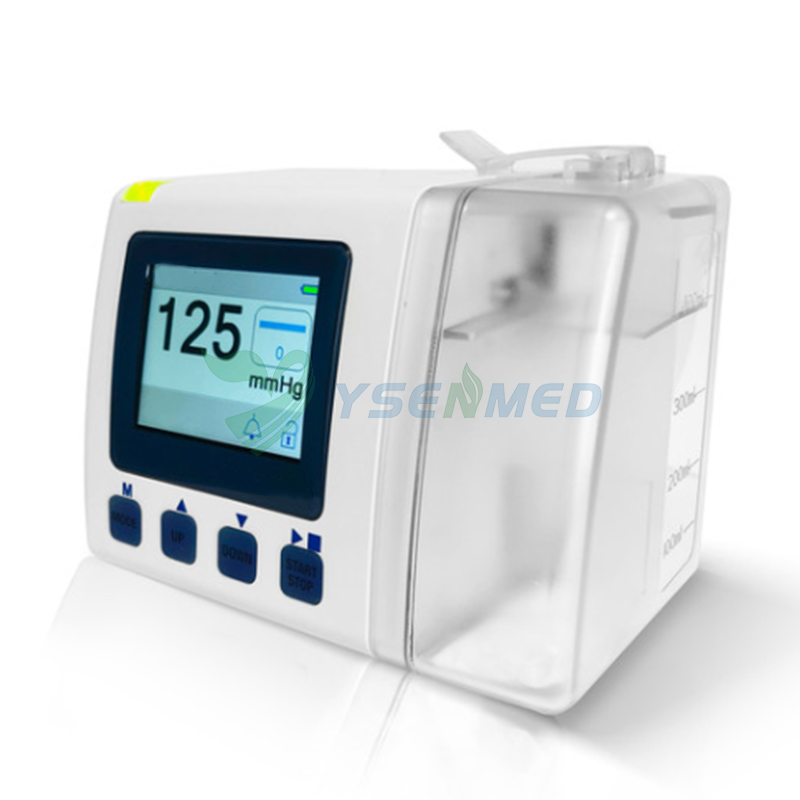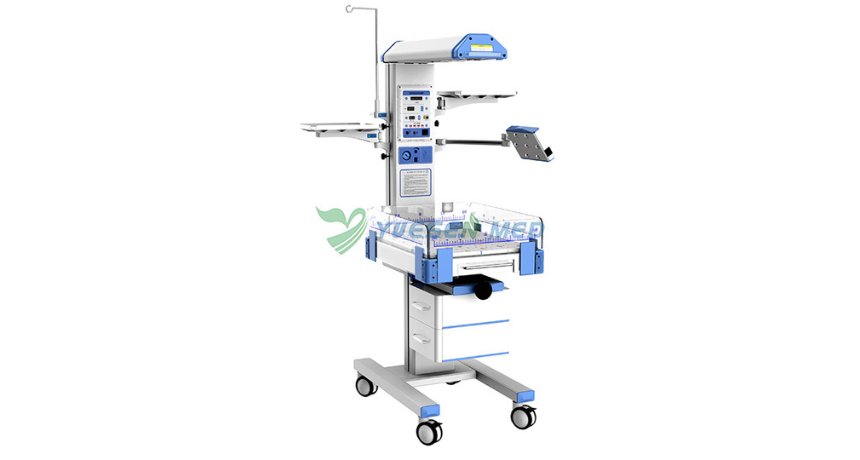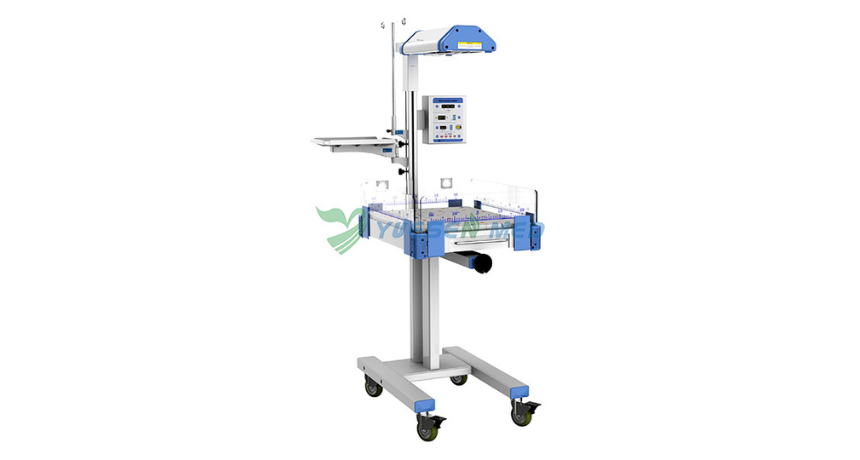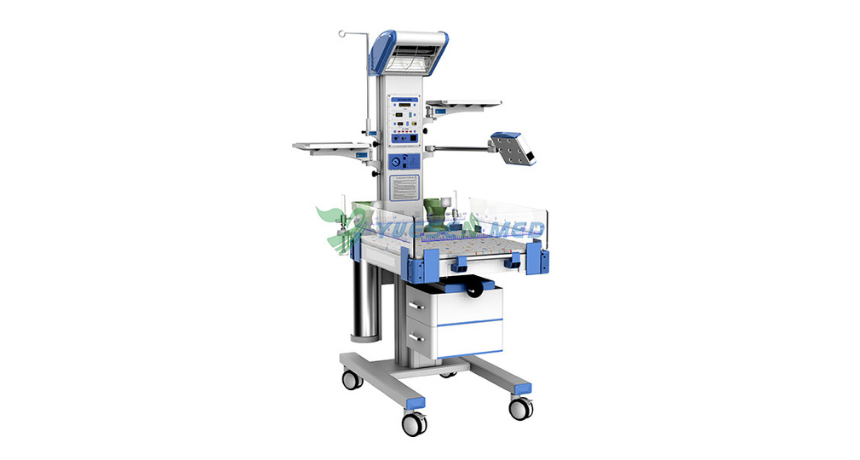Hot Products
YSX500D 50kW DR system set up and put into service in Cambodia.
YSENMED YSX500D 50kW digital x-ray system has been successfully set up and put into service in a hospital in Cambodia.
YSX056-PE serving as a vehicle-mounted x-ray in the Philippines
YSX056-PE 5.6kW portable x-ray unit has been adapted to fit on a truck, to provide mobile x-ray examination service for remote communities in the Philippines.
X Ray Machine To Zimbabwe
x ray machine, 50KW x ray machine
Microscope To Malawi
Achromatic objectives: 4X、10X、40X(S), 100X(S、Oil) Wide field eyepiece: WF10X(WF16X for option) Eyepiece head: Sliding binocular head inclined at 45° Stage: Double layer mechanical stage size 140X140mm, moving range 75X45mm Focusing: Coaxial coarse and
Why Negative Pressure Wound Therapy (NPWT) Systems Are a Game Changer in Healing
Views : 1459
Update time : 2024-08-29 11:13:00
When it comes to wound care, the medical field has seen some pretty impressive innovations over the years. Among these, Negative Pressure Wound Therapy (NPWT) systems stand out as a real game changer. If you've ever dealt with a stubborn wound or know someone who has, you might be curious about how NPWT can make a difference. So, let's dive into the nitty-gritty of NPWT and explore why it's revolutionizing the way we heal!

What is Negative Pressure Wound Therapy?
First things first—what exactly is NPWT? In simple terms, it's a treatment that uses controlled negative pressure to promote healing in wounds. Imagine a vacuum cleaner that gently sucks out all the bad stuff from a wound while encouraging new tissue growth. Sounds pretty neat, right? This method helps to create an optimal healing environment, making it a powerful tool in modern medicine.
How Does NPWT Work?
Now that we know what NPWT is, let's break down how it actually works. The process is quite fascinating:
1. Dressing Application: A special dressing, usually made of foam or gauze, is placed directly on the wound.
2. Sealing: The dressing is then sealed with an airtight cover, creating a closed environment.
3. Applying Negative Pressure: A suction device is connected to the dressing, generating negative pressure.
4. Fluid Removal: This suction pulls out excess fluid, which helps to keep the wound clean and reduces the risk of infection.
5. Tissue Stimulation: The negative pressure also stimulates blood flow to the area, promoting the growth of new tissue.
Who Can Benefit from NPWT?
You might be wondering, “Is NPWT for everyone?” Not quite. While it's incredibly effective, it works best for certain types of wounds. Here are some examples:
- Chronic Wounds: Think diabetic ulcers or pressure sores that just won't heal.
- Post-Surgical Wounds: After surgeries, NPWT can help reduce complications and speed up recovery.
- Traumatic Wounds: Injuries from accidents that require extra care can benefit significantly.
- Skin Grafts: NPWT helps secure grafts and improves their chances of success.
The Benefits of NPWT
So, why is NPWT considered a game changer? Let's explore some of the standout benefits:
1. Faster Healing Times
One of the most significant advantages of NPWT is its ability to speed up healing. Studies have shown that wounds treated with NPWT often heal faster than those treated with traditional methods. It's like giving your wound a turbo boost!
2. Reduced Risk of Infection
By keeping the wound clean and free from excess fluid, NPWT minimizes the risk of infection. For patients with compromised immune systems, this is a critical benefit.
3. Improved Quality of Life
Imagine dealing with a chronic wound that limits your daily activities. NPWT can drastically improve your quality of life by reducing pain and promoting faster healing, allowing you to get back to doing the things you love.
4. Versatility
NPWT systems come in various forms, from portable devices for home use to larger units for hospital settings. This versatility means that NPWT can be tailored to fit individual patient needs, making it accessible to more people.
Potential Risks and Considerations
While NPWT has many benefits, it's essential to consider potential risks:
1. Skin Irritation
The adhesive used in NPWT dressings can sometimes cause skin irritation. It's crucial to monitor the skin for any signs of discomfort and address them promptly.
2. Pain or Discomfort
Some patients may experience discomfort during treatment, especially if the wound is particularly sensitive. However, many find it manageable and tolerable.
3. Contraindications
NPWT isn't suitable for everyone. Patients with certain conditions, like untreated infections or malignancies in the wound area, should avoid this therapy. Always consult with a healthcare provider to see if NPWT is right for you.
How is NPWT Administered?
If you're considering NPWT, you might be curious about how the process works. Here's a step-by-step guide:
1. Initial Consultation
A healthcare professional will evaluate the wound and determine if NPWT is appropriate based on its type and severity.
2. Dressing Selection
The right dressing is chosen based on the wound's size and condition. This is crucial for effective treatment.
3. Device Setup
The NPWT device is set up, and the dressing is applied to the wound. The healthcare provider will ensure everything is sealed properly.
4. Monitoring Progress
Regular follow-ups are essential. Healthcare providers will monitor the wound's progress and adjust the treatment as necessary. It's like having a coach cheering you on during your healing journey!
Home vs. Hospital NPWT
You might be asking, “Can I use NPWT at home?” The answer is yes! Many NPWT systems are designed for home use, allowing patients to manage their treatment comfortably. However, hospital-based systems often provide more robust support and monitoring, especially for complex cases.
Cost Considerations
Let's talk about the cost. NPWT can be pricey, but many insurance plans cover it, especially if deemed medically necessary. It's always a good idea to check with your insurance provider to understand your options and what's covered.
Frequently Asked Questions About NPWT
1. How long does NPWT treatment last?
The duration of NPWT varies depending on the wound type and healing progress. Typically, treatment can last anywhere from a few days to several weeks.
2. Can NPWT be used on all types of wounds?
While NPWT is effective for many wounds, it's not suitable for all. Always consult with a healthcare professional to determine the best treatment for your specific situation.
3. Is NPWT painful?
Some patients may experience discomfort, but many find it tolerable. Pain management strategies can be discussed with healthcare providers to ensure comfort during treatment.
The Future of NPWT
As technology continues to evolve, so does NPWT. Researchers are exploring new materials and devices that could enhance its effectiveness and ease of use. Imagine a world where NPWT is even more accessible, user-friendly, and efficient!
Conclusion
Negative Pressure Wound Therapy is truly a game changer in the world of healing. With its ability to speed up recovery, reduce infection risks, and improve patients' quality of life, it's no wonder that NPWT is gaining traction in medical settings. Whether you're a patient, caregiver, or healthcare professional, understanding NPWT can empower you to make informed decisions about wound management. So, the next time you encounter NPWT, you'll know just how revolutionary it is. Here's to faster healing, healthier lives, and a brighter future!

What is Negative Pressure Wound Therapy?
First things first—what exactly is NPWT? In simple terms, it's a treatment that uses controlled negative pressure to promote healing in wounds. Imagine a vacuum cleaner that gently sucks out all the bad stuff from a wound while encouraging new tissue growth. Sounds pretty neat, right? This method helps to create an optimal healing environment, making it a powerful tool in modern medicine.
How Does NPWT Work?
Now that we know what NPWT is, let's break down how it actually works. The process is quite fascinating:
1. Dressing Application: A special dressing, usually made of foam or gauze, is placed directly on the wound.
2. Sealing: The dressing is then sealed with an airtight cover, creating a closed environment.
3. Applying Negative Pressure: A suction device is connected to the dressing, generating negative pressure.
4. Fluid Removal: This suction pulls out excess fluid, which helps to keep the wound clean and reduces the risk of infection.
5. Tissue Stimulation: The negative pressure also stimulates blood flow to the area, promoting the growth of new tissue.
Who Can Benefit from NPWT?
You might be wondering, “Is NPWT for everyone?” Not quite. While it's incredibly effective, it works best for certain types of wounds. Here are some examples:
- Chronic Wounds: Think diabetic ulcers or pressure sores that just won't heal.
- Post-Surgical Wounds: After surgeries, NPWT can help reduce complications and speed up recovery.
- Traumatic Wounds: Injuries from accidents that require extra care can benefit significantly.
- Skin Grafts: NPWT helps secure grafts and improves their chances of success.
The Benefits of NPWT
So, why is NPWT considered a game changer? Let's explore some of the standout benefits:
1. Faster Healing Times
One of the most significant advantages of NPWT is its ability to speed up healing. Studies have shown that wounds treated with NPWT often heal faster than those treated with traditional methods. It's like giving your wound a turbo boost!
2. Reduced Risk of Infection
By keeping the wound clean and free from excess fluid, NPWT minimizes the risk of infection. For patients with compromised immune systems, this is a critical benefit.
3. Improved Quality of Life
Imagine dealing with a chronic wound that limits your daily activities. NPWT can drastically improve your quality of life by reducing pain and promoting faster healing, allowing you to get back to doing the things you love.
4. Versatility
NPWT systems come in various forms, from portable devices for home use to larger units for hospital settings. This versatility means that NPWT can be tailored to fit individual patient needs, making it accessible to more people.
Potential Risks and Considerations
While NPWT has many benefits, it's essential to consider potential risks:
1. Skin Irritation
The adhesive used in NPWT dressings can sometimes cause skin irritation. It's crucial to monitor the skin for any signs of discomfort and address them promptly.
2. Pain or Discomfort
Some patients may experience discomfort during treatment, especially if the wound is particularly sensitive. However, many find it manageable and tolerable.
3. Contraindications
NPWT isn't suitable for everyone. Patients with certain conditions, like untreated infections or malignancies in the wound area, should avoid this therapy. Always consult with a healthcare provider to see if NPWT is right for you.
How is NPWT Administered?
If you're considering NPWT, you might be curious about how the process works. Here's a step-by-step guide:
1. Initial Consultation
A healthcare professional will evaluate the wound and determine if NPWT is appropriate based on its type and severity.
2. Dressing Selection
The right dressing is chosen based on the wound's size and condition. This is crucial for effective treatment.
3. Device Setup
The NPWT device is set up, and the dressing is applied to the wound. The healthcare provider will ensure everything is sealed properly.
4. Monitoring Progress
Regular follow-ups are essential. Healthcare providers will monitor the wound's progress and adjust the treatment as necessary. It's like having a coach cheering you on during your healing journey!
Home vs. Hospital NPWT
You might be asking, “Can I use NPWT at home?” The answer is yes! Many NPWT systems are designed for home use, allowing patients to manage their treatment comfortably. However, hospital-based systems often provide more robust support and monitoring, especially for complex cases.
Cost Considerations
Let's talk about the cost. NPWT can be pricey, but many insurance plans cover it, especially if deemed medically necessary. It's always a good idea to check with your insurance provider to understand your options and what's covered.
Frequently Asked Questions About NPWT
1. How long does NPWT treatment last?
The duration of NPWT varies depending on the wound type and healing progress. Typically, treatment can last anywhere from a few days to several weeks.
2. Can NPWT be used on all types of wounds?
While NPWT is effective for many wounds, it's not suitable for all. Always consult with a healthcare professional to determine the best treatment for your specific situation.
3. Is NPWT painful?
Some patients may experience discomfort, but many find it tolerable. Pain management strategies can be discussed with healthcare providers to ensure comfort during treatment.
The Future of NPWT
As technology continues to evolve, so does NPWT. Researchers are exploring new materials and devices that could enhance its effectiveness and ease of use. Imagine a world where NPWT is even more accessible, user-friendly, and efficient!
Conclusion
Negative Pressure Wound Therapy is truly a game changer in the world of healing. With its ability to speed up recovery, reduce infection risks, and improve patients' quality of life, it's no wonder that NPWT is gaining traction in medical settings. Whether you're a patient, caregiver, or healthcare professional, understanding NPWT can empower you to make informed decisions about wound management. So, the next time you encounter NPWT, you'll know just how revolutionary it is. Here's to faster healing, healthier lives, and a brighter future!
Related News
Read More >>
 What is the Difference Between Radiant Warmer and Phototherapy?
What is the Difference Between Radiant Warmer and Phototherapy?
Apr .19.2025
Radiant warmers and phototherapy are crucial in neonatal care, but they serve different purposes. Let's dive into the nitty-gritty of these two techniques and explore how they differ, and when each is appropriate.
 YSX056-PE portable digital x-ray unit set up in the Philippines
YSX056-PE portable digital x-ray unit set up in the Philippines
Apr .19.2025
YSX056-PE portable digital x-ray unit has been set up in a hospital in the Philippines and the good quality images please the doctors.
 Is an Infant Radiant Warmer Good for Babies' Health?
Is an Infant Radiant Warmer Good for Babies' Health?
Apr .13.2025
What exactly is the infant radiant warmer, and how does it contribute to a baby's health? Let's dive into this topic and explore the ins and outs of infant radiant warmers.
 What is an Infant Radiant Warmer?
What is an Infant Radiant Warmer?
Apr .12.2025
One of the unsung heroes in neonatal care is the infant radiant warmer. But what exactly is it? Let's dive into the world of infant care and explore the ins and outs of this vital device.



